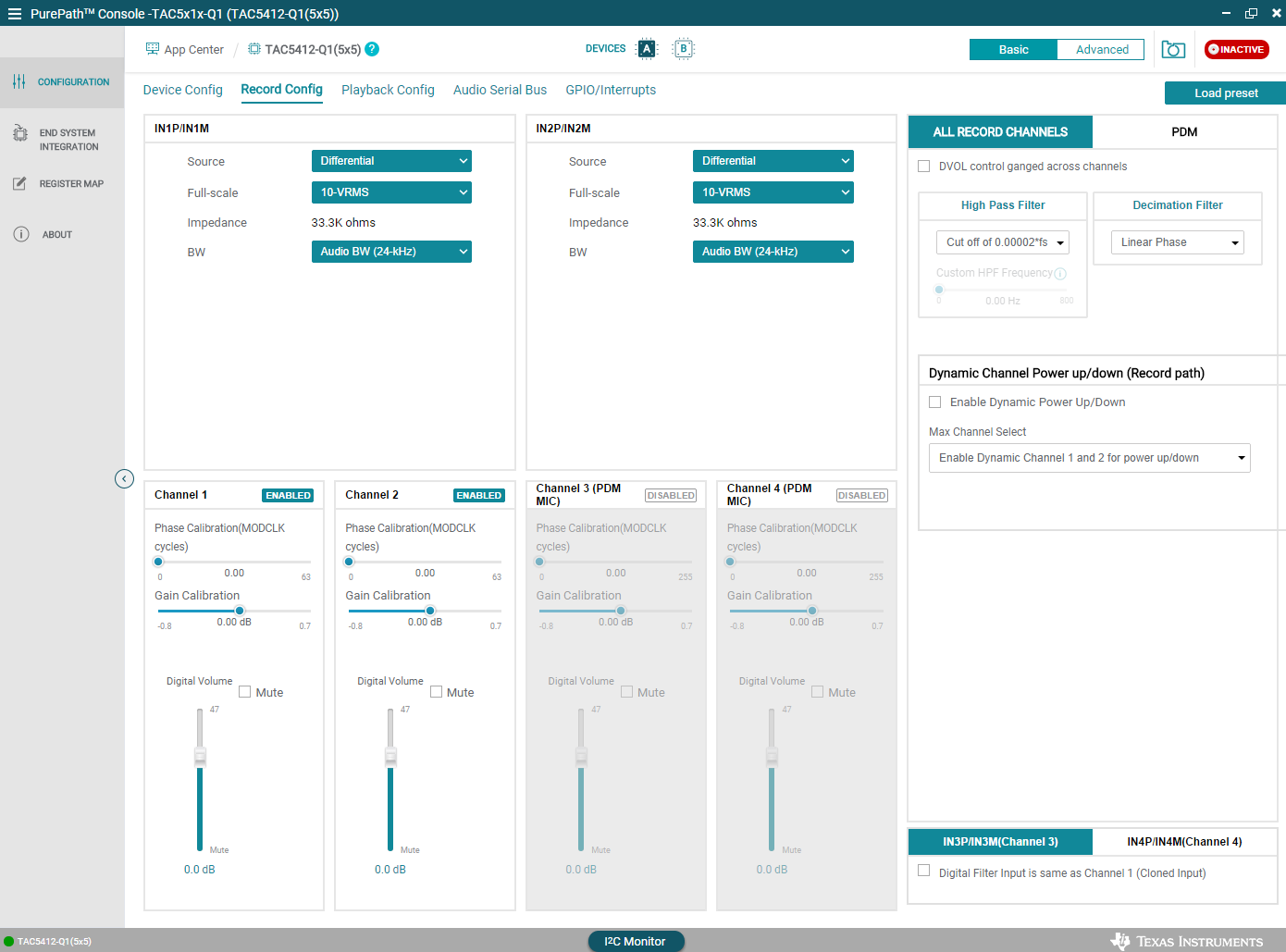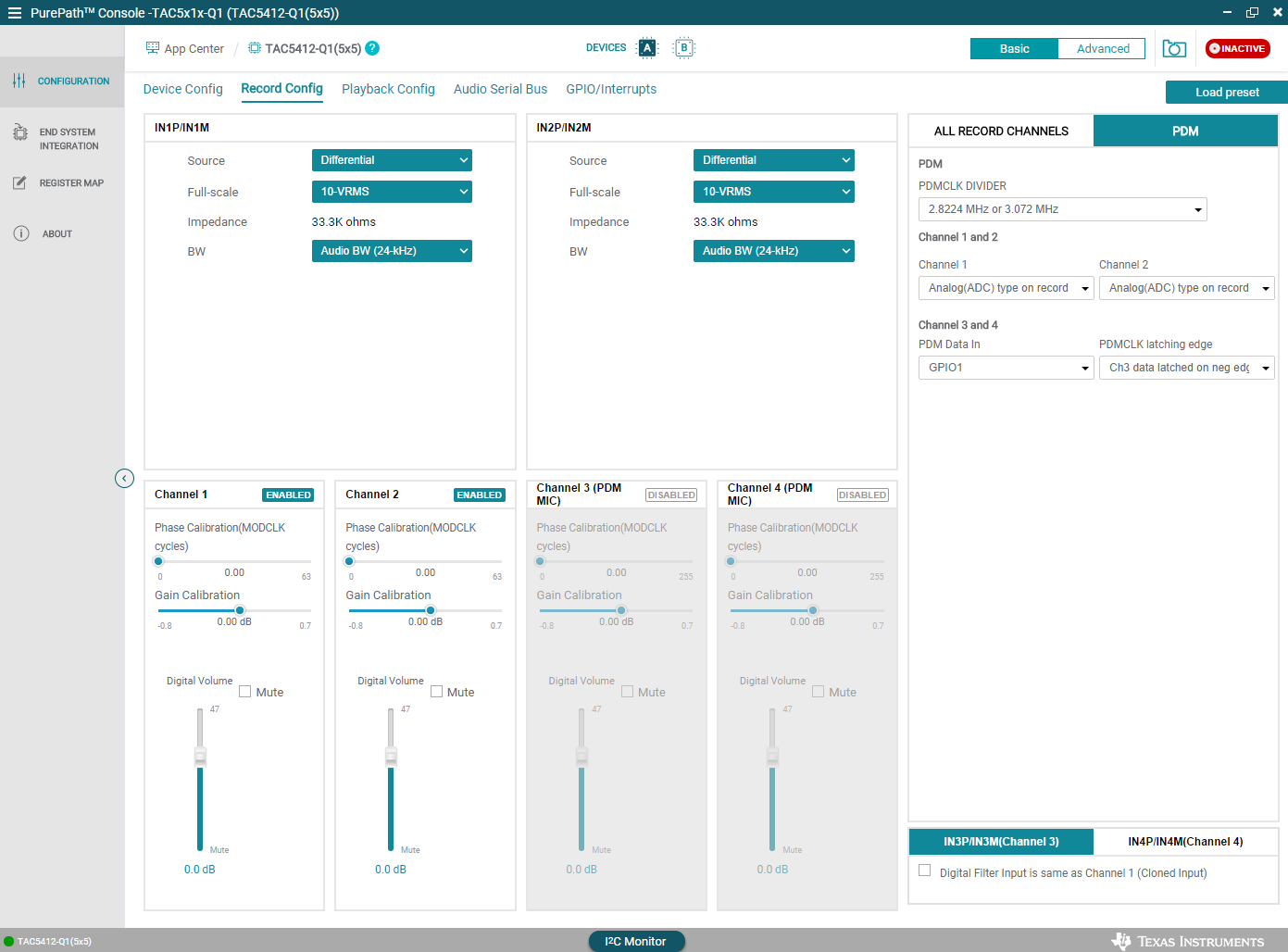SLAAEC6A October 2023 – January 2024
- 1
- Description
- Get Started
- Features
- Applications
- 6
- 1Evaluation Module Overview
-
2Hardware
- 2.1 System Overview
- 2.2
Hardware Overview
- 2.2.1 AC-MB Settings
- 2.2.2 TAx5x1xQ1EVM-K Hardware Settings
- 2.2.3 Diagnostics Hardware Setup
- 2.2.4 GPIO1 Hardware Configurations
- 2.2.5 GPO1A Hardware Configurations
- 2.2.6 GPI1A Hardware Configurations
- 2.2.7 GPI2A Hardware Configurations
- 2.2.8 I2C Address Hardware Configurations
- 2.2.9 Audio Serial Interface Hardware Configurations
-
3Software
- 3.1 Software Description
- 3.2 PurePath Console 3 Installation
- 3.3
TAx5x1x-Q1 EVM GUI
- 3.3.1 Software Overview
- 3.3.2 Configuration View
- 3.3.3 End System Integration View
- 3.3.4 Register Map View
- 3.3.5 Preset Configuration
- 3.3.6 I2C Monitor View
- 3.4 Configuration Examples
- 4Hardware Design Files
- 5Additional Information
- 6Revision History
3.3.2.2 Record Config Tab
The Record Config tab contains the controls for the analog inputs, the different input mode, the input impedance, the bandwidth and the level. The Record Config tab also has the slide buttons for adjusting the digital volume as well as the phase and gain calibrations. On the right hand side, there are pull down menus for selecting the HPF cutoff frequency and the latency of the decimation filter.
 Figure 3-11 Record Config Tab
Figure 3-11 Record Config TabInput channel 3 and channel 4 are associated with Digital Microphone inputs. For PDM input, several PDM clock selections are available with the associated data and clock triggering in this record config tab.
 Figure 3-12 PDM Record Config Tab
Figure 3-12 PDM Record Config Tab